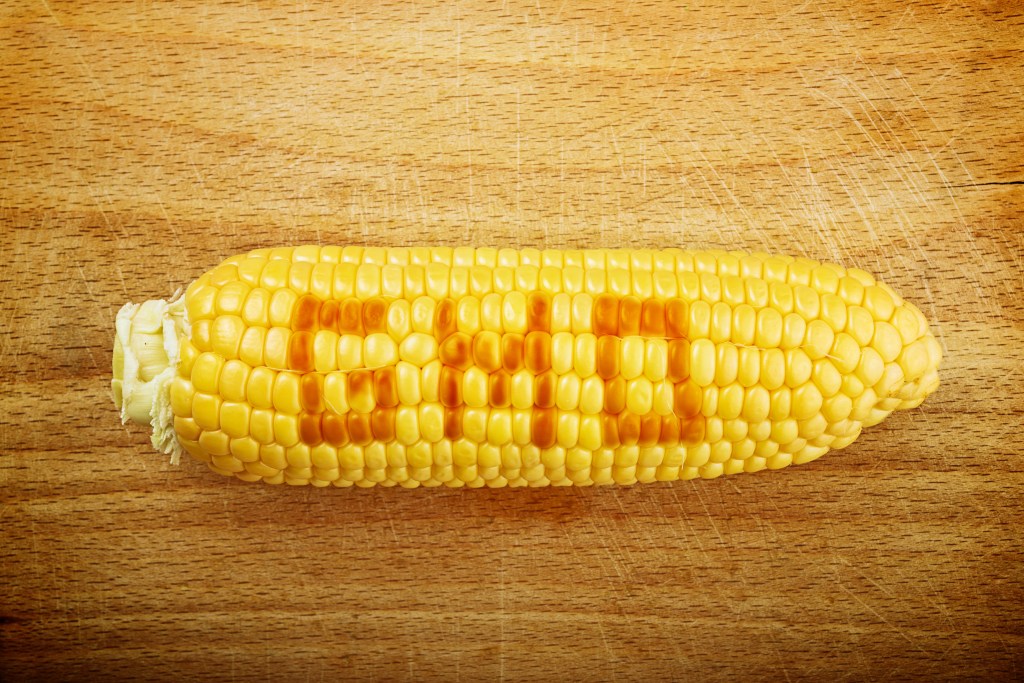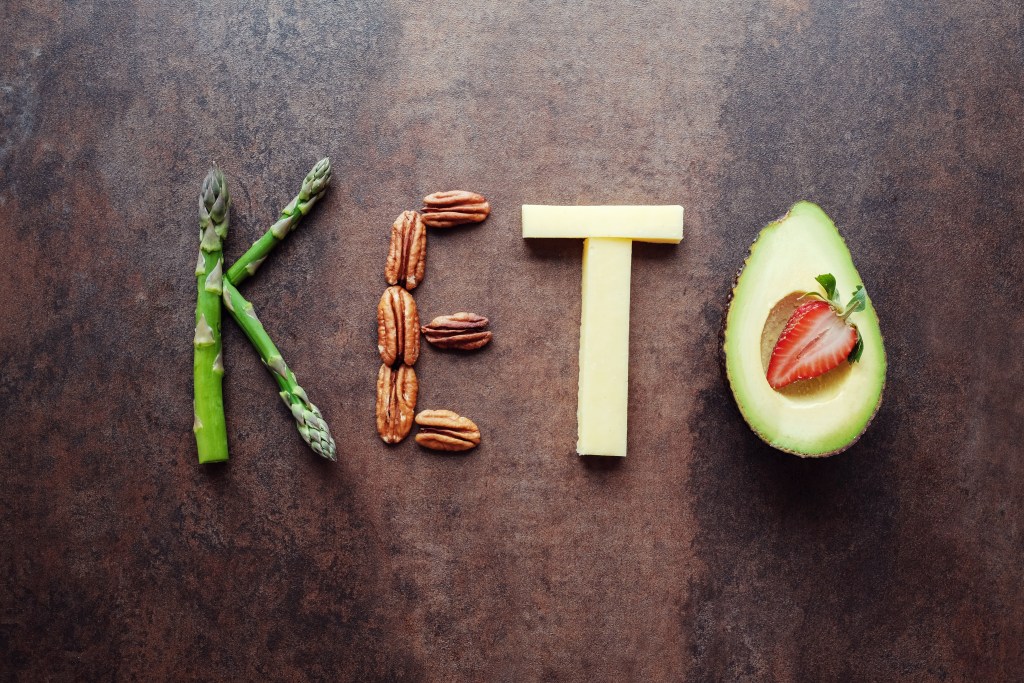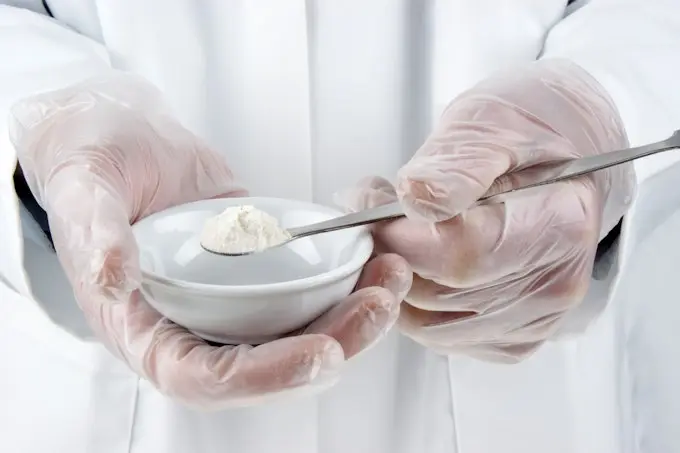As the ketogenic diet grows in popularity, the food industry has responded with a wave of keto-friendly products designed to support low-carb, high-fat lifestyles.
To meet these demands, many manufacturers rely on synthetic low-carb additives such as polydextrose as bulking agents. However, this ingredient isn’t truly aligned with a health-focused keto plan.
Discover why polydextrose isn’t as keto-friendly as it seems and learn which other hidden ingredients in low-carb products are worth avoiding.
What is polydextrose?
Polydextrose is a synthetic carbohydrate, not a naturally occurring compound, and its inclusion in ketogenic products should raise concerns.
This artificial carbohydrate is produced in food manufacturing facilities by chemically synthesizing glucose, sorbitol, and citric acid, typically sourced from genetically modified (GMO) corn. This is a red flag when it comes to its use in keto-friendly products.
Its primary applications include replacing sugar, fat, and starch, improving texture, stabilizing formulations, retaining moisture, and facilitating melting and flavor release.
Polydextrose is often favored in keto-labeled products due to its low digestible carbohydrate content, which helps minimize the net carbs of a food.
However, its synthetic origin and highly processed nature are inconsistent with the principles of a nutrient-dense, whole-food-based ketogenic approach such as Healthy Keto®.
Polydextrose can be found in a wide range of food products, such as:
- Sugar-free and low-carb baked goods
- Protein bars and meal replacement shakes
- Reduced-calorie ice creams and frozen dairy desserts
- Low-sugar candies and chocolates
- Fiber-enriched beverages
- Breakfast cereals and granola
- Salad dressings and sauces
- Flavored yogurts and puddings
- Infant formulas
Due to its chemical composition, polydextrose cannot be digested in the small intestine, which allows it to function similarly to dietary fiber.
“While fiber is widely recognized for its role in supporting colon function and digestive health, it’s important to distinguish between naturally occurring fiber from whole foods and synthetic fibers like polydextrose,” explains Dr. Berg.
Unlike plant-based fiber, polydextrose is artificially manufactured and lacks the full spectrum of health benefits associated with natural fiber sources.
Unfortunately, guidelines released by the Food and Drug Administration (FDA) permit polydextrose to be listed as dietary fiber on nutrition labels, which can be misleading.1
To avoid these marketing tactics, it’s essential to read ingredient lists carefully and be aware of hidden synthetic additives that may not align with a health-conscious diet.
Watch the video below to discover nine common keto ingredients to avoid.
Why polydextrose isn’t safe on keto
Polydextrose is often promoted as a keto-friendly ingredient due to its low calorie content and minimal impact on blood sugar and insulin levels. However, this doesn’t make it a safe or health-supportive choice for a ketogenic diet.
As a synthetic carbohydrate derived from GMO corn, polydextrose raises valid concerns. The long-term health effects of GMO consumption remain poorly understood, particularly in relation to gastrointestinal function, fertility, and liver health.
Research published in Environmental Science Europe highlights, “Serious adverse events of GM consumption include mortality, tumour or cancer, significantly low fertility, decreased learning and reaction abilities, and some organ abnormalities.”2
Furthermore, polydextrose intake can trigger digestive symptoms including abdominal cramping, bloating, excessive gas, and diarrhea.

9 “keto” food ingredients to avoid
To truly benefit from a ketogenic lifestyle, it’s important to look beyond marketing claims and understand which ingredients may hinder your progress.
Many packaged products labeled keto-friendly contain additives and hidden carbs that can disrupt ketosis, affect your metabolism, and compromise your overall health.
Here are nine food additives to avoid on keto.
1. Corn fiber
Corn fiber, often labeled as soluble corn fiber, is commonly used in processed foods as a sugar replacement.
It’s typically derived from GMO corn and may trigger a range of gastrointestinal side effects. The most frequently reported issues of corn fiber include bloating, gas, abdominal cramping, and diarrhea, particularly when consumed in larger amounts.
2. Maltodextrin
Maltodextrin is a highly processed carbohydrate that can cause rapid spikes in blood sugar and insulin levels, often more dramatically than table sugar.
Its high glycemic index makes it particularly problematic for those following a ketogenic diet, as it can quickly disrupt ketosis and interfere with fat-burning.
3. Dextrin
Dextrin is a low-calorie bulking agent commonly used to replace sugar in processed foods, but it’s not a keto-friendly option.
Although it’s low in calories, dextrin is high in net carbohydrates. Just one teaspoon contains approximately 3.6 grams of net carbs, making it unsuitable for those following a ketogenic diet.
4. Dextrose
Dextrose is a synthetic sugar with a high glycemic index, meaning even small amounts can cause significant spikes in blood glucose levels, which can quickly push you out of ketosis.
Dextrose is frequently used in packaged foods as a filler in products such as candies, baked goods, sauces, and snacks, where it helps enhance sweetness and texture without adding significant cost.

5. Polydextrose
This synthetic carbohydrate is generally produced from GMO corn and isn’t a safe keto choice.
Polydextrose is commonly used in processed foods and beverages to replace fat and sugar. Always check labels to identify products containing this additive.
6. Maltitol
Maltitol, a sugar alcohol, has a glycemic index nearly as high as that of regular sugar. It can cause significant spikes in blood sugar and insulin levels, making it unsuitable for a ketogenic diet.
7. Soy protein isolate
Soy protein isolate is typically derived from GMO soybeans and isn’t an ideal choice for a Healthy Keto diet.
Unlike fermented soy products such as tofu or tempeh, soy protein isolate isn’t fermented, which can make it harder on your liver and digestive system.
8. Splenda and other artificial sweeteners
Artificial sweeteners like Splenda, also known as sucralose, as well as aspartame and saccharin, are commonly found in sugar-free foods and diet sodas.
While they replace sugar, these sweeteners may lead to water retention, can increase the risk of insulin resistance, and have been found to disrupt the gut microbiome.
9. Tapioca starch
Contrary to popular belief, tapioca starch isn’t suitable for keto. This common food additive is high in net carbs and lacks fat or protein, offering little nutritional value.
Consuming even small amounts can raise your calorie intake and quickly kick you out of ketosis.

Key takeaways
Processed keto snacks and convenience foods may save time, but are all their ingredients truly keto-friendly? Often, the answer is no.
Many of these products are loaded with artificial additives and hidden fillers that can disrupt ketosis and may be associated with negative long-term health effects.
Simply seeing keto on the label isn’t enough. Always read ingredient lists carefully and understand which additives to avoid to maintain a nutritious and effective ketogenic diet and support your overall health.
FAQ
1. What is polydextrose?
Polydextrose is a synthetic carbohydrate made from corn-derived glucose, sorbitol, and citric acid. It’s commonly used to replace sugar, starch, and fat, and mimics dietary fiber, as it isn’t digested and mostly passes through the intestines.
2. Is polydextrose safe to eat?
While small amounts of polydextrose may be tolerated, it’s best to avoid it. Most polydextrose is derived from genetically modified (GMO) corn, and the long-term health effects of GMO ingredients remain uncertain.
3. Is polydextrose keto-friendly?
Although polydextrose is often marketed as keto-friendly due to its low digestible carb content, its synthetic nature and potential to disrupt gut health make it unsuitable for a nutritious low-carb diet such as Healthy Keto®.
4. Can I have polydextrose while fasting?
While polydextrose doesn’t significantly add to overall energy intake, consuming it during fasting isn’t recommended, as it can trigger digestive responses and may interfere with the metabolic benefits of a fast.
5. Is polydextrose an artificial sweetener?
Polydextrose isn’t classified as an artificial sweetener. It has a mildly tart taste and is used to add texture and bulk, not sweetness.
6. Does polydextrose cause an insulin response?
Polydextrose may have little effect on insulin levels, but that doesn’t make it keto-friendly. Its synthetic nature and potential digestive side effects are important factors to consider.
7. Is polydextrose inflammatory?
Polydextrose is typically made from GMO corn, which may stimulate inflammatory responses, raising concerns about regular consumption of GMO-derived ingredients.
8. Does polydextrose raise blood sugar?
Polydextrose has minimal impact on blood sugar levels, as it’s mostly non-digestible. However, its effects can vary by individual and may stimulate a glycemic response in some.
9. What kind of sweetener is polydextrose?
Polydextrose isn’t a sweetener. It’s a synthetic carbohydrate used as a bulking agent and to add texture to foods. It has a mildly tart taste and doesn’t provide significant sweetness.
10. Is polydextrose a sugar alcohol?
No, polydextrose isn’t a sugar alcohol and is classified as a synthetic carbohydrate, due to its chemical structure.
11. Is polydextrose the same as sugar?
While polydextrose and sugar both contain glucose, polydextrose isn’t sweet, is only partially absorbed, and has a minimal impact on blood glucose.
In contrast, sugar is rapidly absorbed and triggers significant spikes in blood sugar levels.
12. Is polydextrose a dietary fiber?
Polydextrose is often classified as a dietary fiber due to its ability to pass through the digestive system without being absorbed. However, it’s a synthetic fiber, not a natural one, and doesn’t offer the same health benefits as whole-food fibers.
13. Is polydextrose good for constipation?
Polydextrose may aid regular bowel movements as it’s a soluble fiber that attracts water and forms a gel in the colon.
However, it can cause diarrhea and other gastrointestinal issues in some individuals, especially those sensitive to synthetic fibers.
14. Is polydextrose an inulin?
Polydextrose and inulin are both soluble fibers, but they differ in origin. Inulin is a naturally occurring fiber found in plants such as onions, artichokes, and chicory, while polydextrose is a synthetic, artificial fiber.
15. What is polydextrose found in?
Polydextrose was invented as a sugar replacement to lower the energy value of processed foods. It’s a bulking agent and increases the fiber content of frozen desserts, ice cream, high-fiber dairy products, infant formula, soft candy, and low-calorie foods.
16. Is polydextrose carcinogenic?
There’s no evidence to suggest that polydextrose is carcinogenic. However, as it’s typically derived from GMO corn, some individuals prefer to avoid it due to concerns about potential long-term health effects associated with GMO ingredients.
17. Is polydextrose natural?
No, polydextrose isn’t natural as it’s created with synthetic substances and doesn’t contain naturally occurring components found in whole foods.
18. Is polydextrose made from corn?
Yes, polydextrose is made from corn. The glucose extracted from corn is chemically processed with sorbitol and citric acid to create polydextrose.
19. What is the glycemic index of polydextrose?
Polydextrose has a glycemic index of 7, which is relatively low compared to glucose, which has a glycemic index of 100.
20. Is polydextrose the same as dextrose?
No, polydextrose isn’t the same as dextrose. Polydextrose is a synthetic fiber, while dextrose is a simple sugar.
21. What is polydextrose used for?
Polydextrose is commonly used in sugar-reduced, sugar-free, and no-added-sugar foods as a bulking agent to replace sugar or starch. Its low digestibility and low cost make it an ideal choice for processed food products.
22. Is polydextrose a carbohydrate?
Yes, polydextrose is a complex carbohydrate synthetically produced from corn and structurally similar to dietary fiber.
Sources
- https://www.fda.gov/media/113663/download ?
- https://enveurope.springeropen.com/articles/10.1186/s12302-021-00578-9 ?







